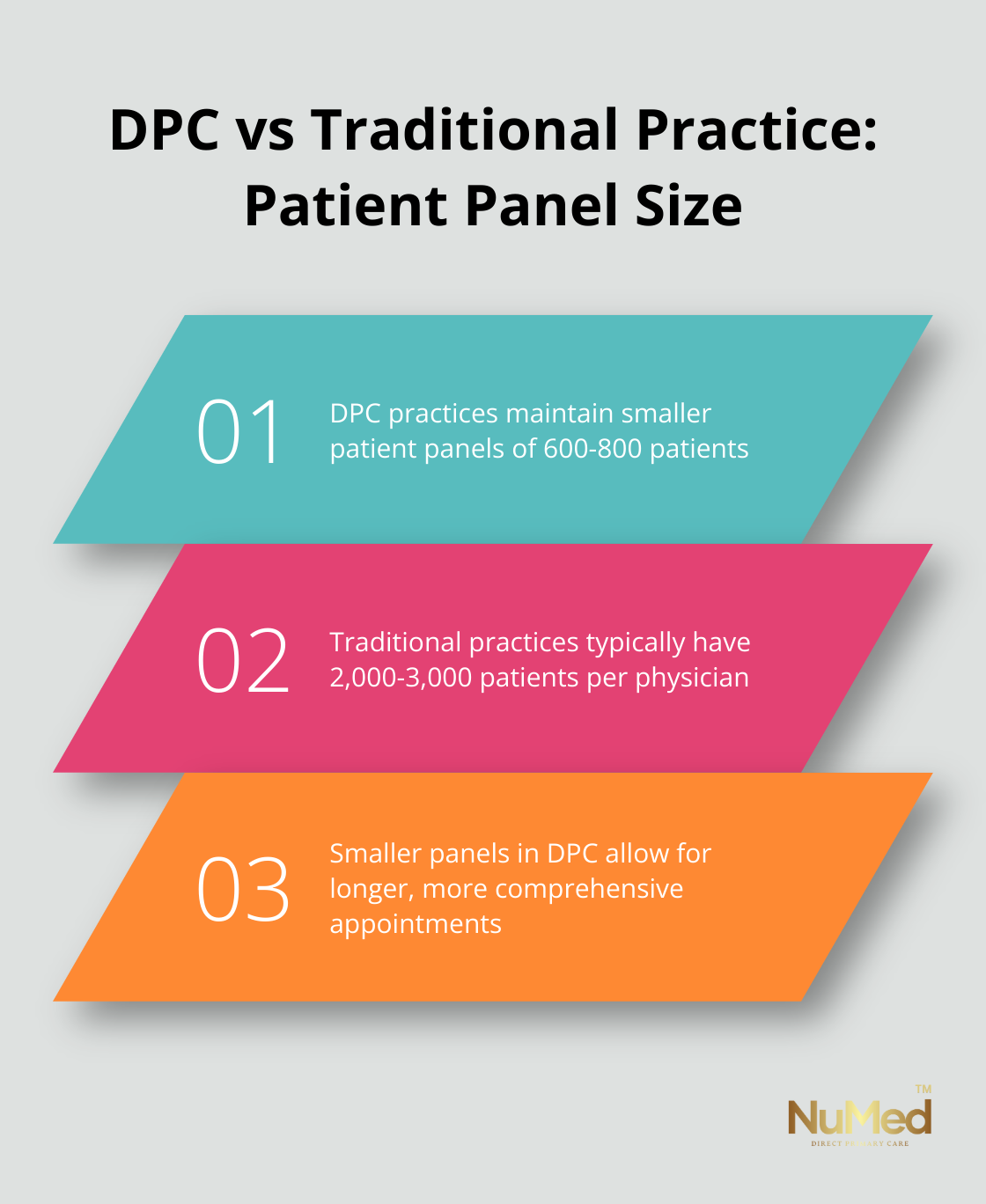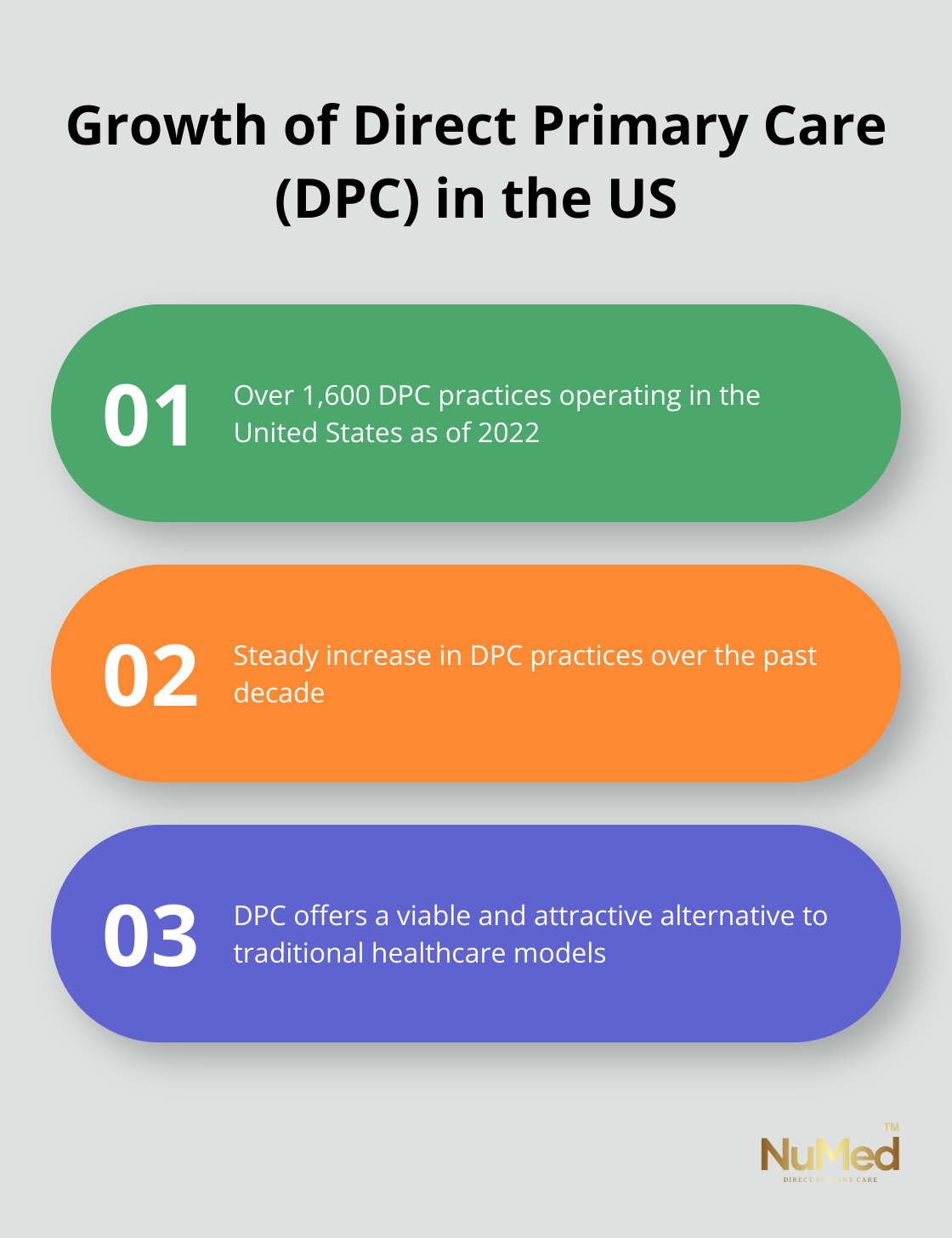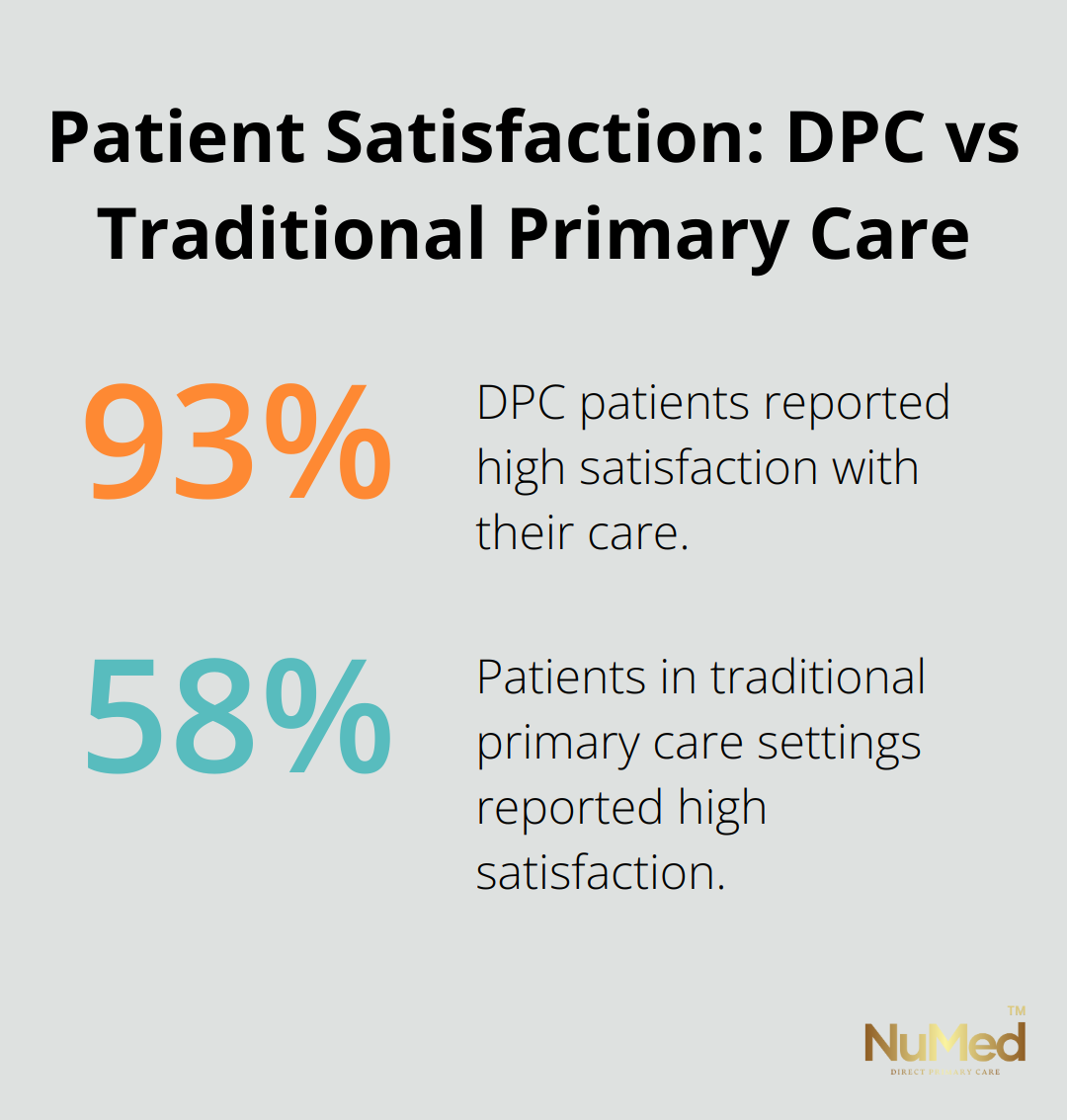At NuMed DPC, we’re excited to explore the benefits of Direct Primary Care (DPC) with you. This innovative healthcare model is reshaping how patients receive medical care and how doctors practice medicine.
In this comprehensive look, we’ll uncover why DPC is gaining popularity among patients and healthcare providers alike. Get ready to learn about improved access, personalized care, and transparent pricing that make DPC a game-changer in the healthcare industry.
What is Direct Primary Care?
The Fundamentals of Direct Primary Care
Direct Primary Care (DPC) revolutionizes healthcare delivery by establishing a direct relationship between patients and their healthcare providers. This subscription-based model eliminates insurance companies as intermediaries, offering a fresh approach to primary care.
In a DPC practice, patients pay a monthly or annual fee that covers most primary care services. This fee typically includes unlimited office visits, prompt appointments (often same-day or next-day), and extended consultations. Many DPC practices also provide additional services such as basic lab work, minor procedures, and wholesale pricing on medications.
The monthly fee structure allows providers to maintain smaller patient panels (usually around 600-800 patients compared to 2,000-3,000 in traditional practices). This reduction in patient load enables providers to dedicate more time to each patient, often 30-60 minutes per visit, in contrast to the rushed 15-minute appointments common in conventional settings.

DPC vs. Traditional Healthcare Models
The primary distinction between DPC and traditional healthcare models lies in the payment structure and resulting care delivery. Traditional models require doctors to bill insurance companies for each service provided, leading to complex coding systems and administrative overhead. DPC eliminates this complexity, allowing doctors to focus on patient care rather than paperwork.
A qualitative study revealed that physicians described a mismatch between the structure of their work hours and the work expected of them, which created constant time pressure. This highlights the potential benefits of DPC in addressing time constraints faced by healthcare providers.
Key Features of DPC Practices
DPC practices often offer a range of services that extend beyond typical primary care settings:
- Telemedicine services: Many DPC practices provide virtual consultations, improving access to care when patients need it most.
- Wholesale pricing on medications and lab work: Through direct negotiations with labs and pharmacies, DPC practices often secure these services at significantly reduced rates.
- Care coordination: DPC doctors frequently act as advocates for their patients, helping to coordinate care with specialists when necessary.
- Emphasis on preventive care: With more time to spend with patients, DPC doctors can focus on lifestyle interventions and preventive strategies to improve long-term health outcomes.
The Growing Popularity of DPC
The American Academy of Family Physicians reports that as of 2022, over 1,600 DPC practices operated in the United States. This number has steadily increased over the past decade, reflecting the growing recognition of DPC as a viable and attractive alternative to traditional healthcare models.

As we explore the advantages of Direct Primary Care for patients in the next section, you’ll discover why this innovative model continues to gain traction among those seeking a more personalized and efficient approach to healthcare.
Why Patients Love Direct Primary Care
Unparalleled Access to Care
Direct Primary Care (DPC) transforms the healthcare experience for patients across the United States. This innovative model offers benefits that address many frustrations associated with traditional healthcare systems.
DPC significantly improves access to healthcare services. Patients no longer wait weeks or months for an appointment. Many DPC practices offer same-day or next-day appointments, ensuring patients receive timely care when they need it most. This quick access prevents minor health issues from escalating into more serious conditions.
A study identified the effect of NP primary care models, compared with models without NP involvement, on cost, quality, and service utilization by patients.
Personalized Care That Makes a Difference
DPC allows for longer, more comprehensive appointments. Instead of the typical 15-minute visits in traditional settings, DPC providers often spend 30 to 60 minutes with each patient. This extended time enables doctors to explore patients’ health concerns, lifestyle factors, and medical history in depth.
The result is a more thorough understanding of each patient’s unique health needs. A DPC provider might uncover underlying factors contributing to a patient’s chronic condition that shorter, rushed appointments might overlook.
Transparent Pricing Without Surprises
One of the most appealing aspects of DPC for many patients is the transparent and affordable pricing structure. Monthly membership fees (typically ranging from $50 to $150) cover most primary care services. This predictable cost allows patients to budget for their healthcare expenses more effectively.
Moreover, DPC practices often negotiate discounted rates for lab work, imaging, and medications. These savings pass directly to patients, further reducing out-of-pocket expenses. Some DPC practices report saving their patients up to 95% on prescription medications through wholesale pricing arrangements.
Building Meaningful Doctor-Patient Relationships
The DPC model fosters stronger relationships between doctors and patients. With smaller patient panels, providers dedicate more time and attention to each individual. This continuity of care leads to better health outcomes and increased patient satisfaction.
A survey conducted by the Direct Primary Care Coalition found that 93% of DPC patients reported high satisfaction with their care, compared to only 58% of patients in traditional primary care settings.

Proactive Approach to Health and Wellness
DPC emphasizes preventive care and wellness, shifting the focus from treating illnesses to maintaining good health. This proactive approach leads to earlier detection of potential health issues and more effective management of chronic conditions.
A DPC practice might offer regular health coaching sessions, nutrition counseling, or stress management workshops as part of their services. These additional resources empower patients to take an active role in their health and well-being.
As we move forward to explore the benefits of Direct Primary Care for healthcare providers, it becomes clear that this innovative model not only enhances patient care but also transforms the professional lives of providers and medical staff. By focusing on metabolism and overall wellness, DPC practices can help patients achieve and maintain optimal health.
How DPC Transforms Healthcare Providers’ Lives
Streamlined Practice Management
Direct Primary Care (DPC) revolutionizes the professional lives of healthcare providers. This innovative model addresses many challenges that have long plagued the medical profession, creating a more fulfilling and sustainable career path for doctors and medical staff.
One of the most significant advantages of DPC for healthcare providers is the dramatic reduction in administrative burden. Traditional practices often require extensive staff to handle insurance billing, coding, and claims processing. In contrast, DPC practices operate with a lean administrative structure, which frees up resources and time for patient care.
These changes in attachment were consistently shown to impact patients, providers, clinics and the healthcare system, influencing all aims of the quintuple aim.
Enhanced Professional Satisfaction
The DPC model allows healthcare providers to practice medicine in a way that aligns with their values and aspirations. By removing the constraints of insurance-driven care, doctors can make decisions based solely on what’s best for their patients, not what’s dictated by insurance companies.
Personalized Patient Relationships
In traditional primary care settings, doctors often see 25-30 patients per day, spending an average of just 15 minutes with each. DPC practices typically limit their patient panels to 600-800 patients, which allows for longer, more in-depth appointments.
This shift enables healthcare providers to truly know their patients, understand their health histories, and provide personalized care. Dr. Jane Smith, a DPC physician in Colorado, states, “I now have the time to listen to my patients, explore their concerns thoroughly, and develop treatment plans that address the root causes of their health issues. It’s the way medicine should be practiced.”
Financial Stability and Practice Autonomy
DPC offers healthcare providers a stable and predictable income stream through monthly membership fees. This model eliminates the uncertainty and delays associated with insurance reimbursements, which provides a more reliable financial foundation for medical practices.
Moreover, DPC practices have the freedom to design their services and pricing structures without interference from insurance companies. This autonomy allows healthcare providers to offer innovative care models and services that best serve their patient population.
The DPC model proves that it’s possible to deliver high-quality, patient-centered care while maintaining a financially viable practice. As more healthcare providers discover the benefits of DPC, we expect to see continued growth in this transformative approach to primary care.
Final Thoughts
Direct Primary Care (DPC) transforms healthcare delivery, offering numerous benefits for patients and providers. This innovative model eliminates intermediaries, creates personalized experiences, and fosters stronger doctor-patient relationships. DPC improves access to care, extends appointment times, and focuses on preventive health measures, all while providing transparent pricing and reduced out-of-pocket costs.
DPC aligns with broader healthcare reform trends, addressing shortcomings in traditional models. It emphasizes patient-centered care, preventive health, and sustainable practices, which can lead to improved health outcomes and increased satisfaction. DPC presents an attractive alternative for those seeking comprehensive, personalized healthcare approaches.
At NuMed Primary Care, we offer a DPC experience that focuses on preventing illness and addressing root causes. Our approach includes lab services, functional medicine, and health coaching (tailored to individual needs). Consider DPC as a healthcare option to take a proactive step towards a more engaged and personalized approach to your health.
















